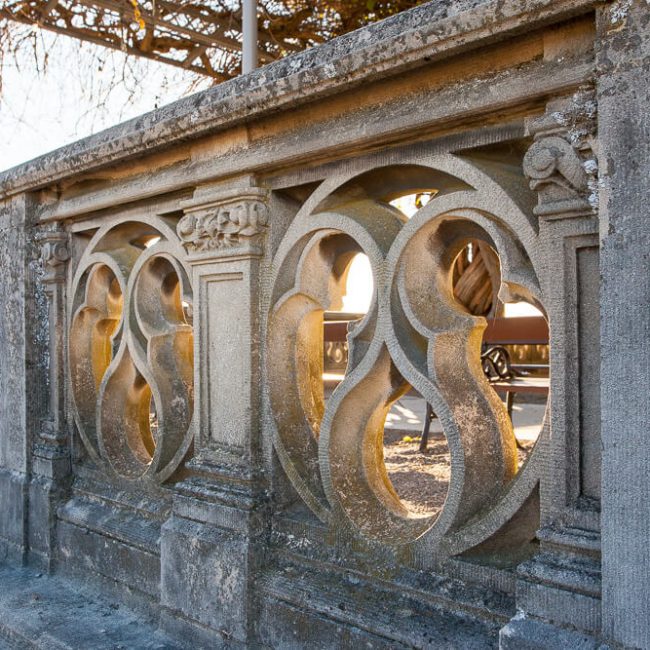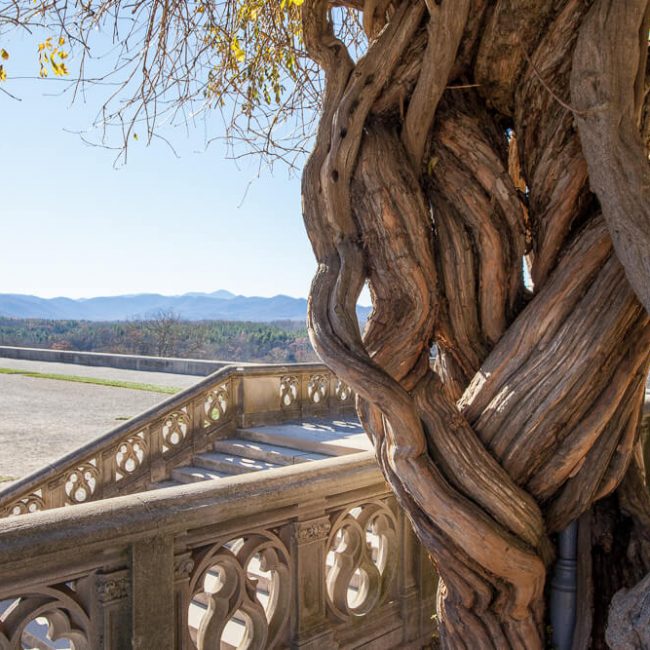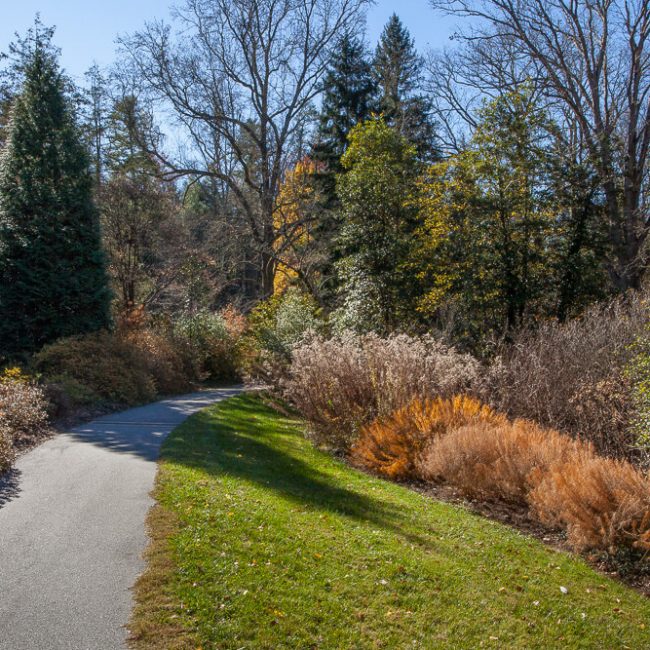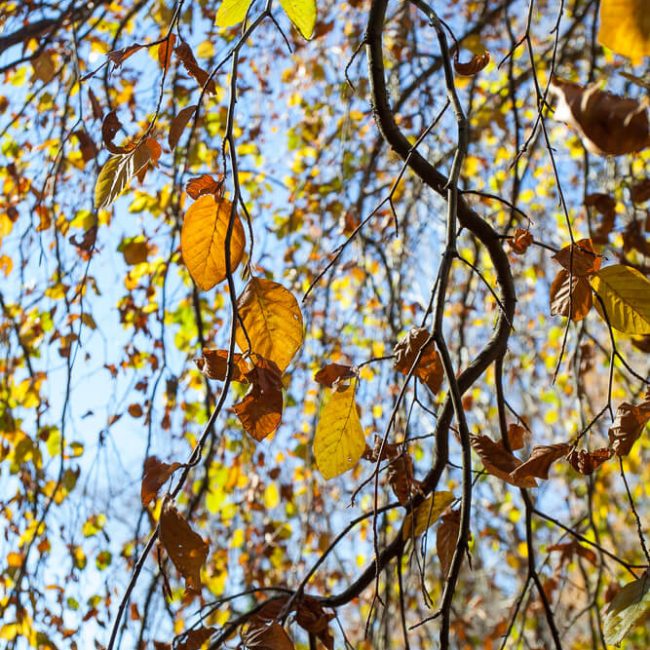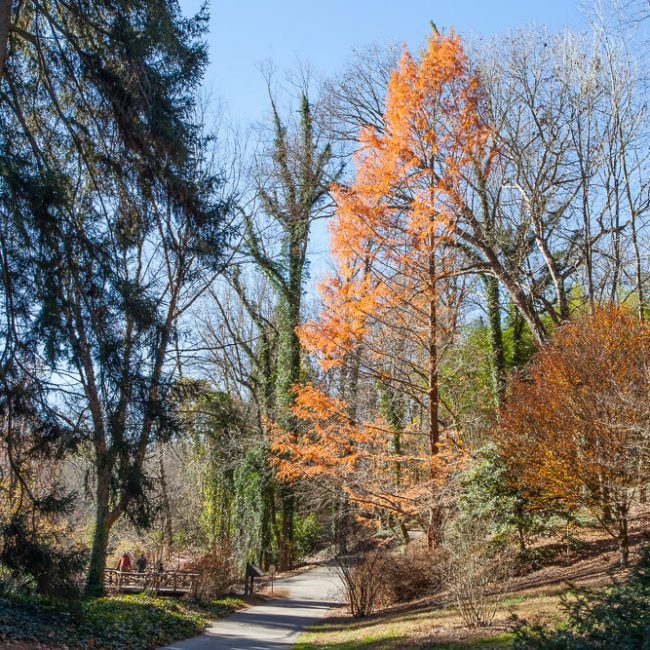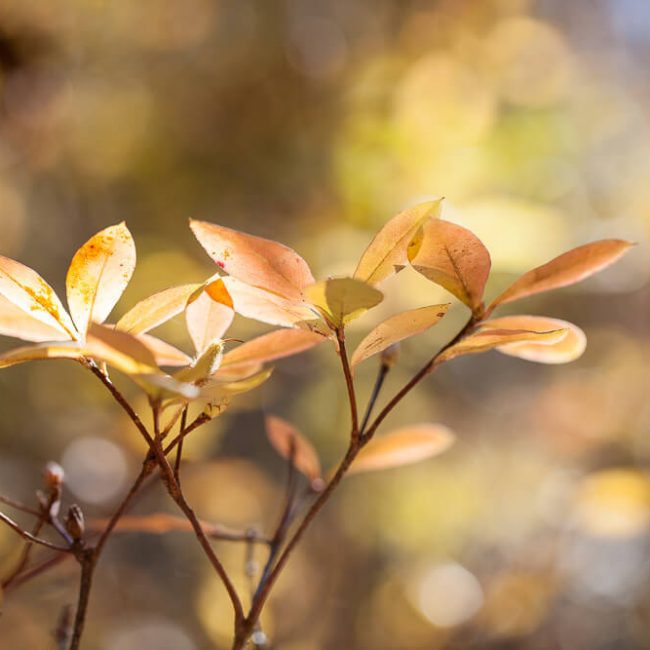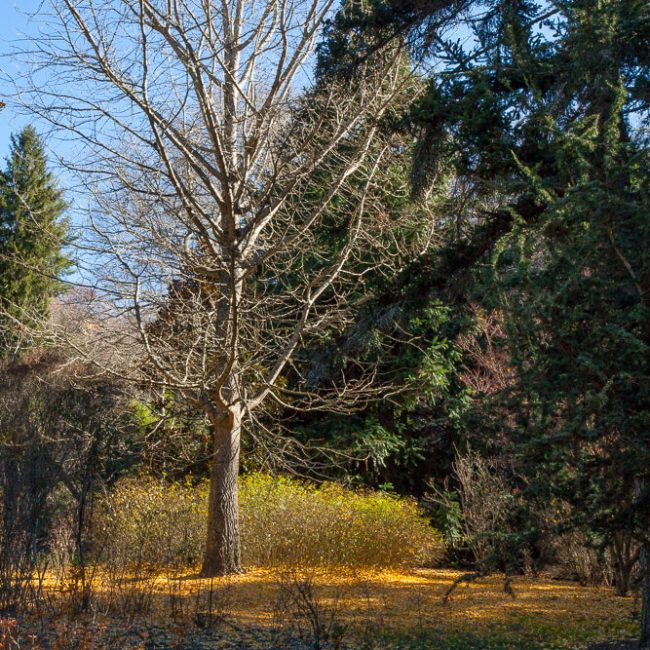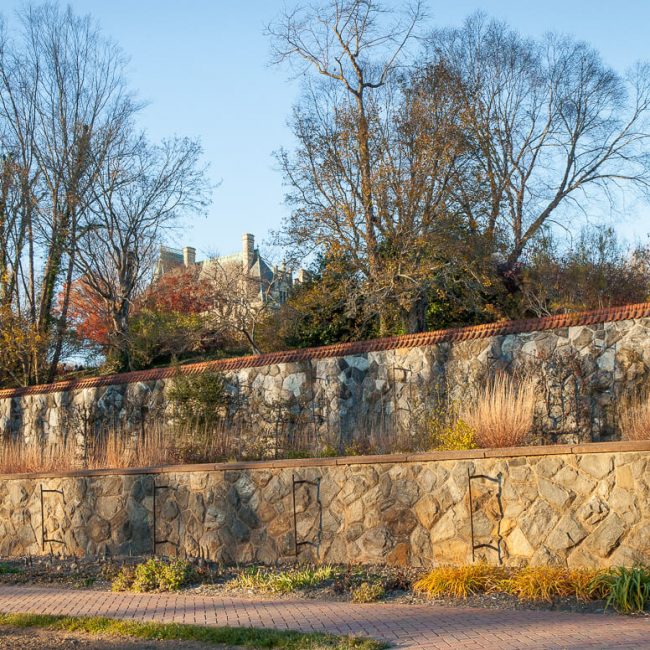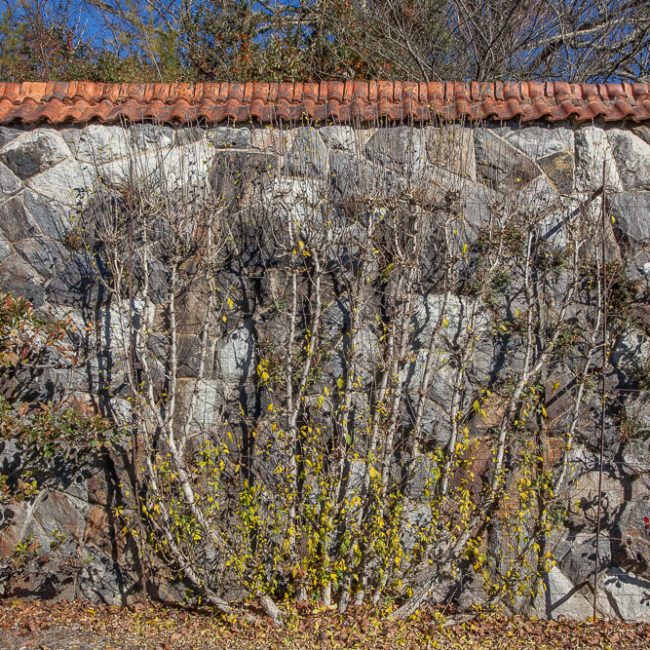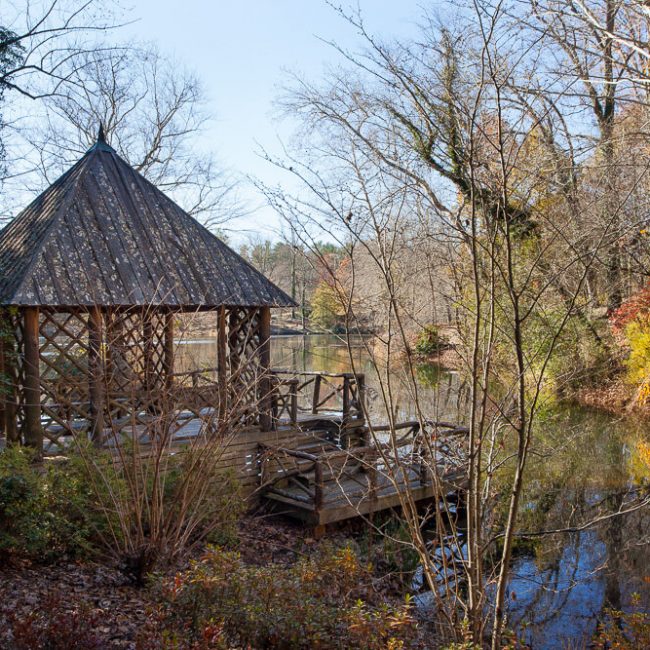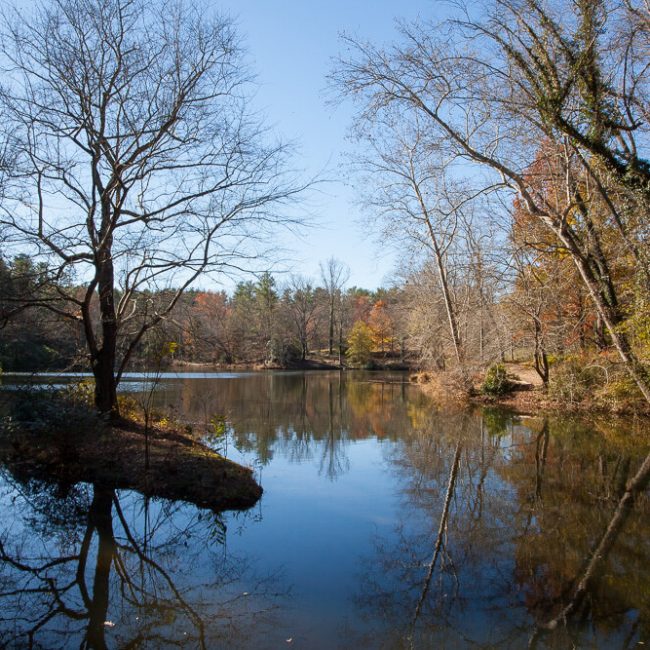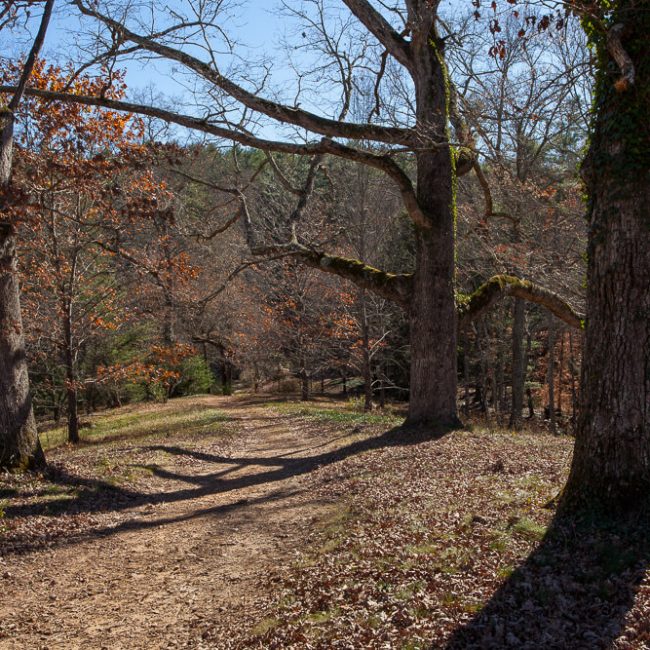Biltmore Gardens Still Beautiful in November
Most garden and nature lovers don’t plan their vacation to the Blue Ridge Mountains in late November. The native azaleas and rhododendron aren’t blanketing the mountainsides with their blossoms. The fall foliage peak has long passed. And by now, the first frost of the season has finished off most of the plants.
But as I chased warmer weather south, I found myself in Asheville for a couple weeks. And from what I’m told, no visit to Asheville would be complete without a stop at the Biltmore House and Gardens. It’s true that most of the trees are bare at this time of year. But the Picturesque garden style and the wide variety of plants ensures that there is still a lot of beauty to be seen at the Biltmore Gardens.
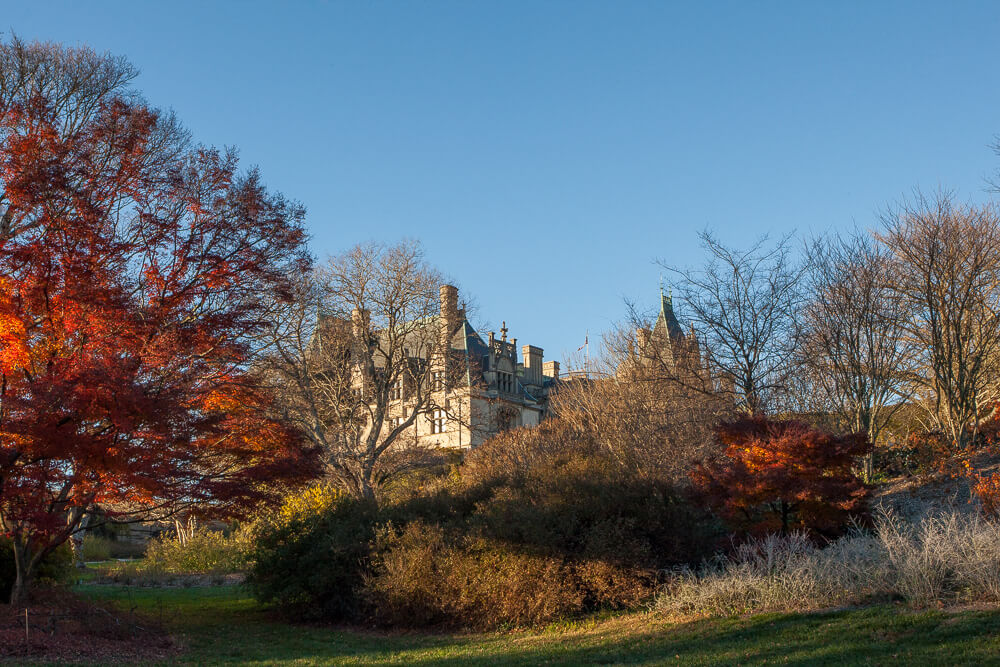
The Biltmore House viewed from the Shrub Garden.
Olmsted’s Legendary Gardens
At the culmination of a long successful career, Frederick Law Olmsted agreed to design the Biltmore gardens and grounds for George Vanderbilt. One of the most renowned landscape architects at the time, Olmsted’s credentials include Central Park and the grounds surrounding the Capitol building in Washington, D.C. The Biltmore Gardens would be his last project, and in many respects, one of the best examples of his work. The gardens today are similar to when the Vanderbilt’s lived there. The Biltmore’s horticulture team works diligently to preserve Olmsted’s vision. With that in mind, it’s easy to slip back in time as you stroll through the gardens.
Within the 75-acre landscaped gardens, you’ll find stone terraces, esplanades, pergolas, the Italian Garden, and the 4-acre walled English garden. Olmstead’s naturalistic design style connects the formal gardens to the landscape seamlessly. Meandering paths through the Shrub Garden and the Azalea Garden transport you to and from the formal gardens.
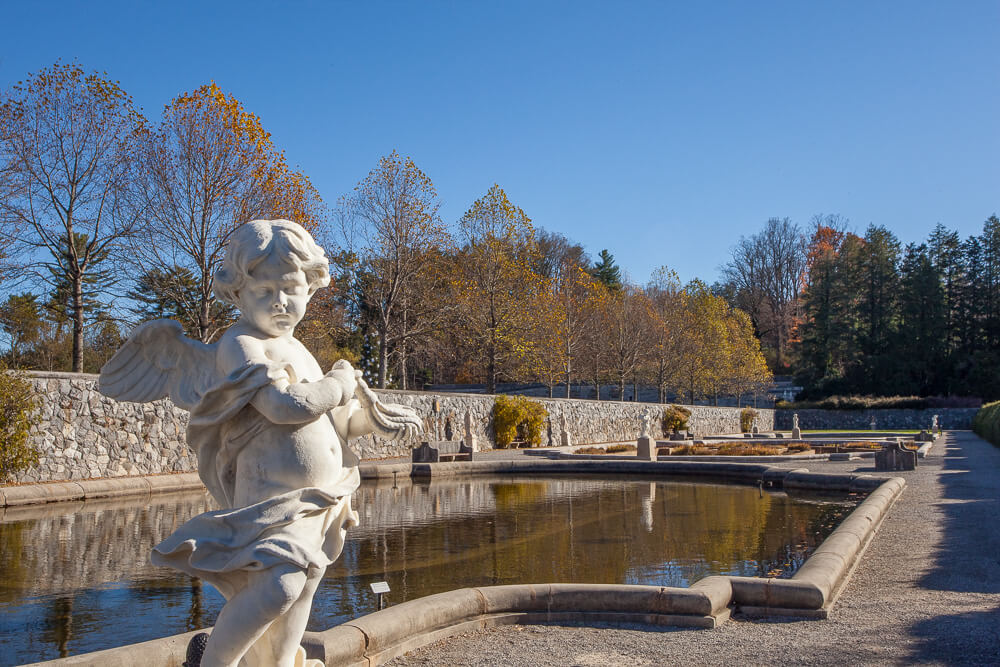
The Italian Garden was designed to be an extension of the house. Here, the Vanderbilts entertained guests with lawn games like croquet .
The Italian Garden sits on a terrace directly below the wide esplanade in front of the French Renaissance manor. Three pools are the main focal point of the Italian Garden and are flanked by two lawns. Of course, the pools are missing their water lilies, lotus, and papyrus in November. With few plantings, the terrace is perhaps the least naturalistic garden on the estate. But in the absence of plants, the strong, clean lines of the pools and terrace wall lead your eye to the forest beyond.
In late fall, your time is best spent strolling through the 15-acre Azalea Garden. It’s the largest garden on the estate and contains thousands of native and hybrid azaleas. Deciduous azaleas are slow to drop their leaves in the fall. Throughout the garden, their small rust, orange, and purple leaves twinkled in the bright autumn light. A meandering “ramble” winds through the garden, cutting through mounds of mature azaleas and evergreen shrubs. The path offers picturesque views of the landscape and specimen trees and shrubs. Olmstead strove to work with the existing landscape to enhance its natural beauty.
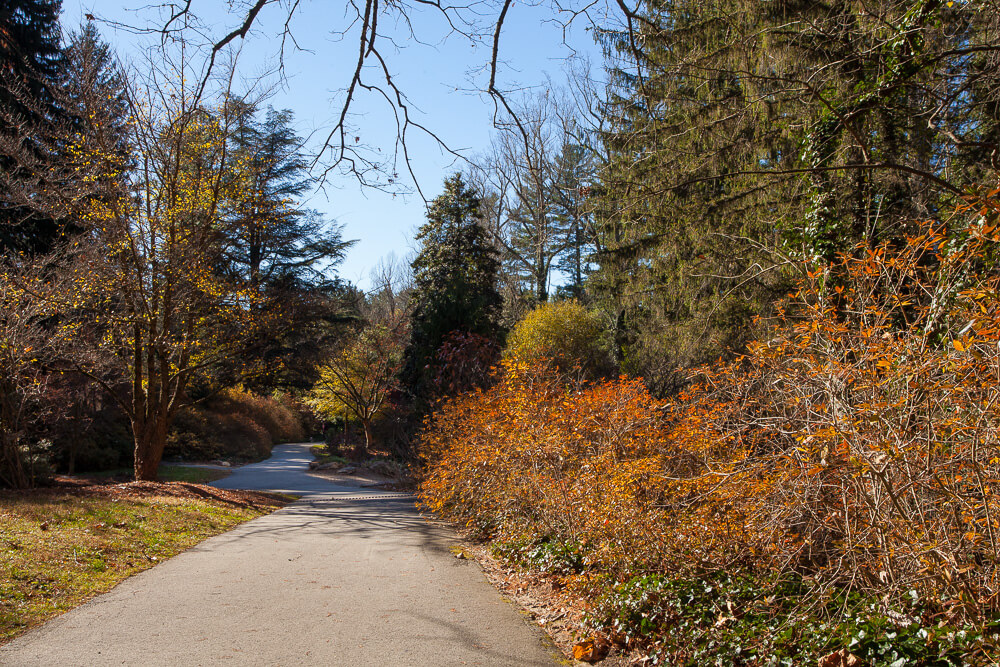
Olmsted’s adherence to the Picturesque style can best be seen in the Azalea Garden; he sought to enhance the natural beauty of the landscape rather than completely transform it. As you walk through the garden, what lies beyond the next turn is just slightly out of view, often hidden in shadow. As you progress, the shifting light reveals new views and highlights exquisite specimen trees framed by their surroundings.
The Walled Garden
The four-acre walled garden is a classic example of the bedding-out style popular during the Victorian era. A grape arbor bisects the garden and is surrounded by symmetrical beds. During the growing season, flowers are massed in the geometric beds and create colorful patterns that resemble quilts. But by late November, frost had killed the chrysanthemums that are the focus of the fall display and the beds lay barren.
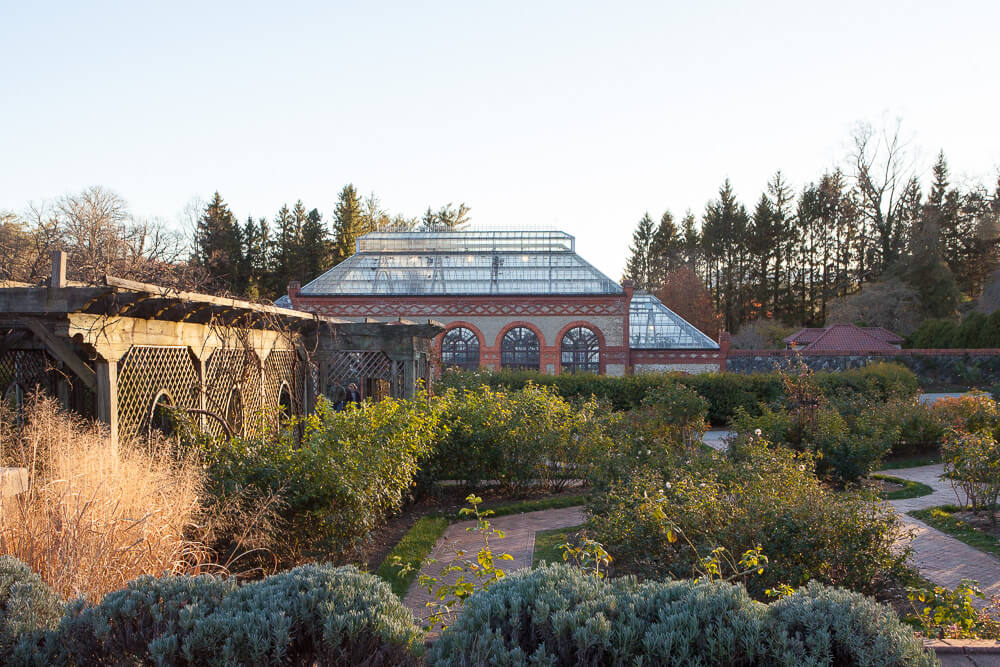
The grape arbor leads visitors to the glass conservatory designed by Richard Morris Hunt.
Perennial beds line the perimeter of the garden; yellow and red twig dogwood, winterberry, and evergreens add year-long interest. The golden leaves of dying grasses glowed in the fading afternoon light. Protected by the garden walls, the roses were still green and many were adorned with frost-kissed blossoms.

A perennial border decorates the perimeter of the Walled Garden and provides year-round interest when the rest of the beds have been put to sleep for the winter.
Bucolic Views from the Biltmore Meadow
Once you’ve reached the Bass Pond, head to the left and follow the path that hugs the shore of the pond. After you pass over the arched brick bridge, you’ll notice a dirt path that leads up a hill. A small sign indicates a meadow is ahead. “What’s this?” you may wonder. The meadow isn’t on the official Biltmore Garden map. If you’re curious like me, you’ll follow the sign.
At the top of the hill, the ground levels out, and you’re rewarded with breathtaking views of the Blue Ridge Mountains and the Biltmore House. The short trek up the hill is well worth the detour. In fact, this is the perfect spot to escape the crowds and relax in the bucolic views.
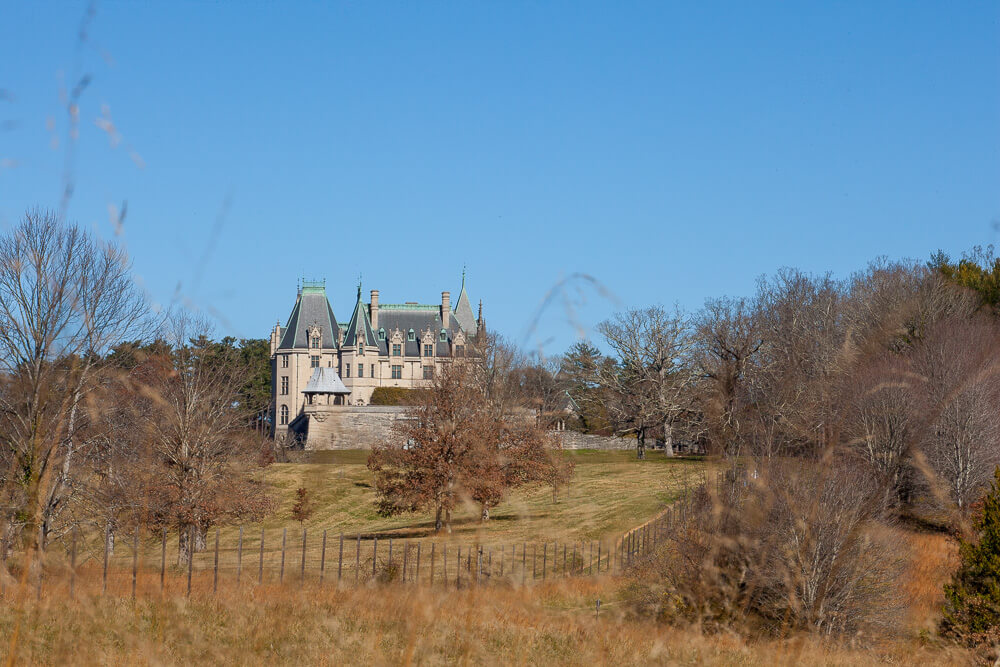
The Biltmore House viewed from the top of the meadow.
Tips for Exploring the Biltmore Gardens
Go Early
Each day, thousands of people head to the Biltmore to experience the opulence of the Gilded Age. Even with the vast number of rooms and acres, it gets crowded. Arrive as early as you can to escape the crowds–and to get better parking. You’ll enjoy quiet reflection in the gardens with fewer people scrambling around you. Also, with so many gardens to explore, it’s better to start early.
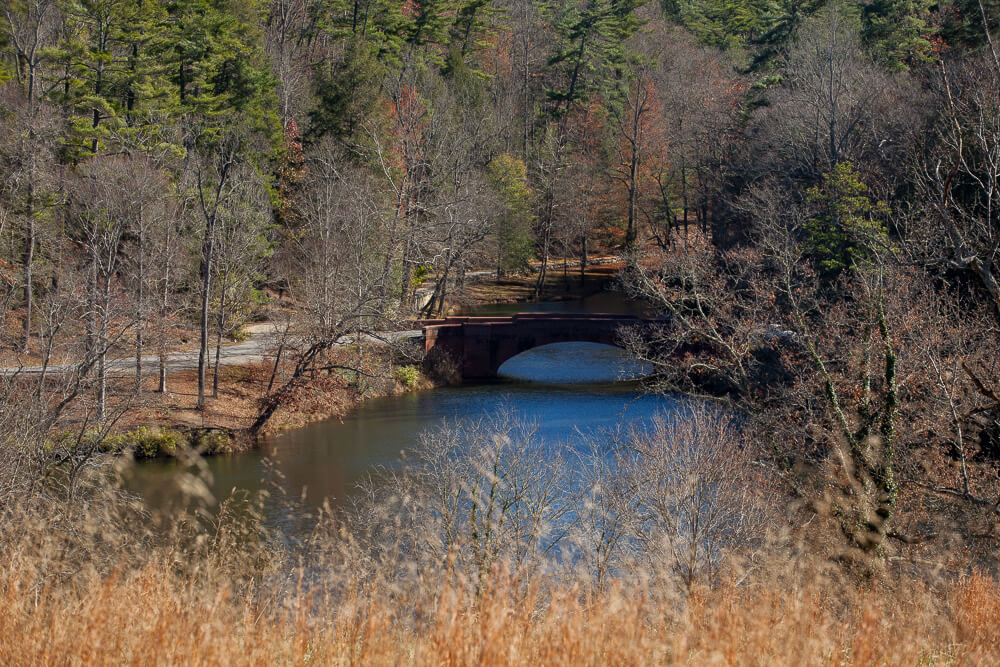
The views from the meadow are worth the hike. From that vantage point, you can see the Biltmore House, the Bass Pond and brick bridge, and the Blue Ridge Mountains in the distance.
Bring a Picnic
If you plan to spend the entire day at the Biltmore, you’re going to get hungry. Instead of eating in the crowded dining areas, bring a snack to enjoy on the grounds. Outside food is permitted in the grounds and gardens; visit their website for details.
Dress in Layers
In November, the mornings are quite chilly with frost lingering on grass blades. But as the sun rises, Asheville warms up considerably by mid-afternoon. Smart layers will help you stay comfortable while you explore. The hike up to the meadow had me sweating and pulling off layers.

These views are what attracted George Vanderbilt to this property. Beneath the South Terrace, the rolling hills of the 250-acre Deer Park are crowned by the towering Blue Ridge Mountains.
While the ideal time to visit is in the spring and summer. The Biltmore Gardens are beautiful year round. Don’t let the cold deter you from visiting this amazing estate.



